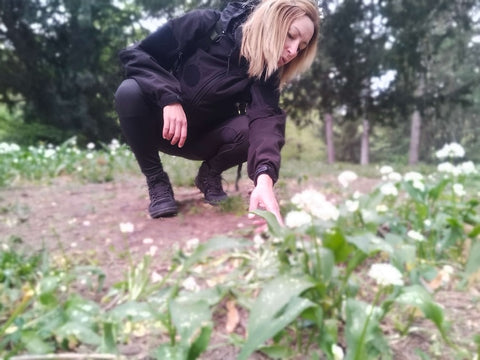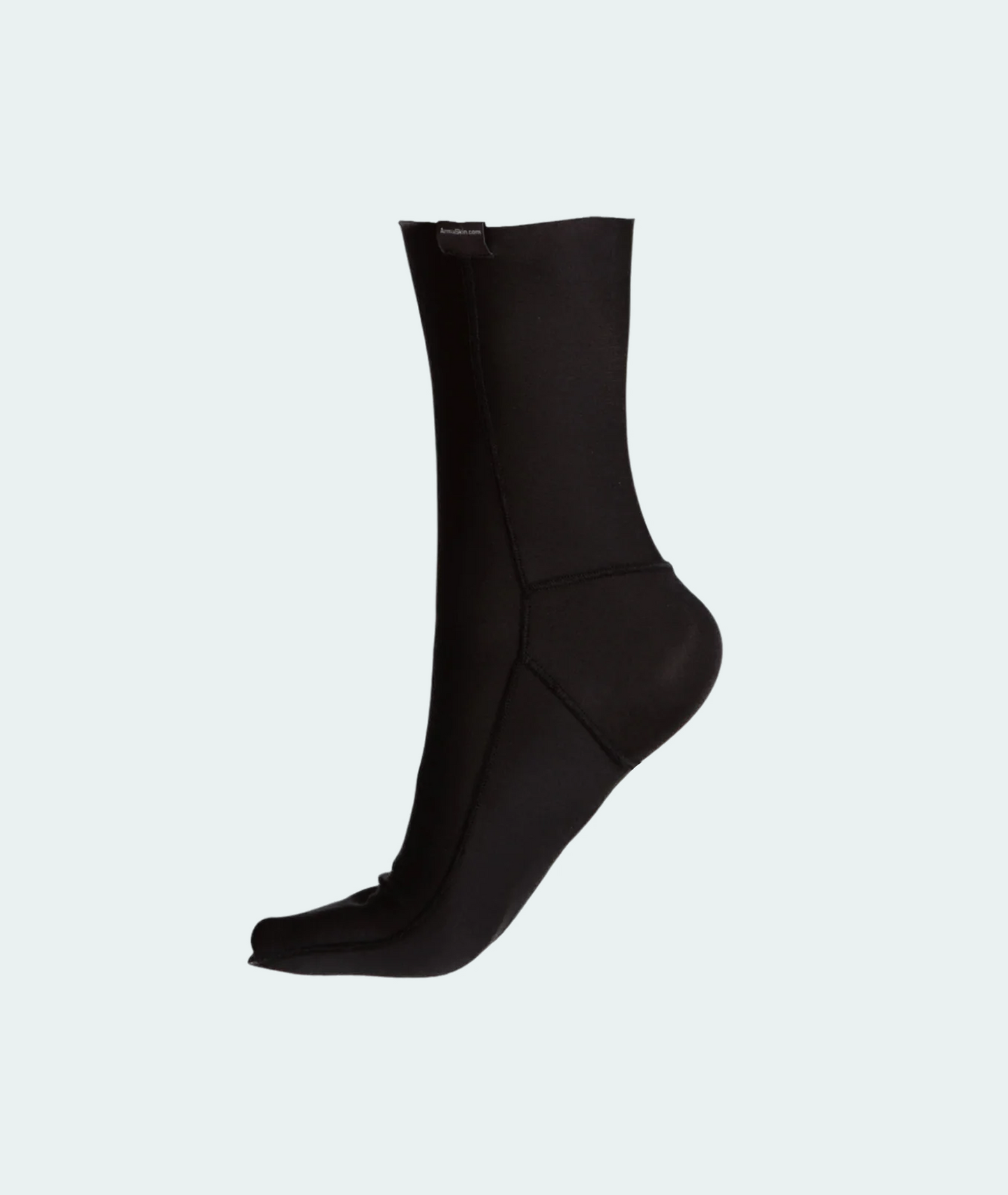
ArmaSkin Editor: In this article, Kyt Lyn Walken is addressing a fascinating topic and highlights the care required. The tips provided are likely universal, but we’d welcome any feedback on the article especially from some Australian readers.
Premise
When caught off-grid, one of the toughest tasks is to recognize if a plant is edible.
In this article we will lift the lid on some basic knowledge related to Plant Identification.
All about observation of resources
Imagine finding yourself in a possible emergency situation where you need to spend more than one night off grid without provisions.
If you are in a hurry, you may not notice some – unexpected! - resources you have at very easy reach.
They could be items that, with some smartness, can turn out to be tools.
Others can provide you unusual but edible food, which means vital energy.
Or they can be a perfect tinder for making fire in uneasy conditions.
In tough times, you may learn how to become smart enough to see opportunities even in things that seemed insignificant to you in the past. Or, in case of plants, you never imagined they could be edible.
Throughout these paragraphs, we will gain the essential information on how to tell if a plant is edible and how we can take advantage of it.
A couple of historical facts
Don’t Let Blisters Slow You Down!
Discover the ultimate solution with ArmaSkin Anti-Blister Socks. Designed with advanced friction-reducing technology, these socks keep your feet dry, comfortable, and blister-free – no matter the challenge.
Shop NowThe starting point is that some primitive plants have been able to survive till nowadays.
I am no rube in saying that this fact itself,. from a Darwinistic perspective is surprising that some plants still exist nowadays.
Moreover, it is amazing to notice how they maintained the same features they used to have thousands of years ago.
In fact, some of them, like ferns, did appear in some fossil records. Others, like cycads, gingkos, horsetails, mosses and clubmosses are still considered either as primitive or as well adapted specimens.
Resilience and adaptability granted them the ability to survive until nowadays, just... under different forms.
In fact, they are the slighest forms of evolution of their ancestors. For this specific reason they are considered "living fossils".
We must demonstrate gratitude to those primitive men who assess the edibility of plants. Triggered by necessity or curiosity they were, in fact, the first who ate some plants – or parts of them. They tested them for us.
In certain cases, they paid for their audacity with their own lives. On the opposite, they discovered how nutritious and delicious they were.
Later on, the first records on edible plants were filled in, passing down this precious amount of information which actually allowed us to be not only informed on the edibility – or not – of a determined plant, on the nutritional facts but also on the side effects of overeating it.
Introduction to concept of edibility
As Robin Wall Kimmerer wrote, “In some Native languages the term for plants translates to “those who take care of us.”
As a matter of fact - unless you are a botanist or a plant biologist - it takes years to study the properties of plants.
But you can always resort to other ways, like:
- attending some Plant ID courses
- purchasing and studying books of local plants
- carrying a Plant ID Field Guide with you when you are off for some activities in the Great Outdoors
Nonetheless, what if you find yourself in an emergency situation, with a shortage or absence of provisions of food? You may regret not having the proper knowledge to provide yourself some easy-at-reach things to eat, without ending up placing traps or hunting wildlife.
This is why it is so important to master the basics related to identification of edible plants, and, equally, to know how to proceed with the "universal edibility test".
The inner structure of plants
Each plant consists of several parts, which can be safe to eat or poisonous. In severe cases, eating even a microscopic quantity could lead to death.
One case above all is the yew (Taxus Baccata). Commonly known as "Tree of death", almost all its parts happen to be deadly poisonous. This is because of the presence of toxines alkaloids. However,
the red, mature aril (the red flesh of the berry which cover the seeds) are not only edible, but also are rich in antioxidants.
Plant parts are: fruit, nuts, berries, flowers, leaves, stems and obviously roots. In some cases, berries may be edible but not leaves and vice versa. Bear this in mind when you put them to the “universal edibility test”.
Plants you must avoid
In case you find yourself inside an unfamiliar area and you aren't accustomed to what you can actually eat or not, keep in mind some basic rules which could literally save your life.
As a first precaution, keep yourself away from the following plants:
- which show sap inside the stems or have glassy leaves
- which spread a very distinctive and unpleasant smell
- which you may sting with
- which are growing in a rotting area, or maybe near unsafe water
- which have bright colored stings

How to practice the universal edibility test
If caught up alone in an emergency situation, you will be forced to run the test straight by yourself.
The best way to go is to determine a specific area which is rich of specimens of a particular species.
By doing so, you will be sure you can take advantage of the plant in case it does end up being safe to eat. In fact, in a long-term survival scenario, systematic foraging will be the key to success.
In order to be successful at your test, keep in mind to drink only purified water before and while getting the test done, and don't reach the point of starvation. Do all the experiments in daylight, so you cannot go wrong with the quantity of plant you wish to test.
In fact, you need to be extremely clear headed when you test the plant.
Focus on testing just one part at a time, for example avoiding mixing stems with roots. By that, you will know exactly what part of the plant is edible.
Refrain from consuming it raw. By cooking a small partion of the plant, you make sure to kill any possible pathogens. Boil it for fifteen minutes at least, and observe if the portion shows any signs of redness, stinging, blistering or even burning.
Providing none of those warnibng signs show up, you can proceed with the second phase. Carefully touch your outer lips with the now mild portion of the plant and wait for additional fifteen minutes to determine any possible reaction.
If the lips aren't itching, position about half a table spoon of the on your tongue. Don't chew it! Just hold it on your tongue and eject it. Check with extreme caution if you have any symptoms.
If nothing alarming happens, chew the piece of plant for at least a quarter of an hour, but do not swallow it. In fact, you still must wait for any possible bad reaction you may experience.
After fifteen minutes, you can swallow it and then wait the next eight hours to assess if any specific reaction takes place. Eat another small part of the cooked plant (1/4 cup is recommended) and wait for additional time (8 hours). If no abdominal pain, vomiting, dizziness happen, you can consider the plant safe to eat.
This process may appear to be tedious and time-consuming, but it is universally considered the safest way to assess the edibility of a plant you aren't familiar with.
In a emergency scenario, it is always mandatory to privilege safety over speed.
About the author: Kyt Lyn Walken is the official European representative and instructor for Hull's Tracking School (Virginia, USA), and she is a certified Wildlife Conservation Ranger for C.R.O.W. (Conservation Rangers Operations Worldwide). She has been an outdoors and tracking enthusiast since childhood.
Kyt currently lives and works in Europe while often traveling overseas.
This article is brought to you by ArmaSkin blister preventing liner socks. www.armaskin.com














